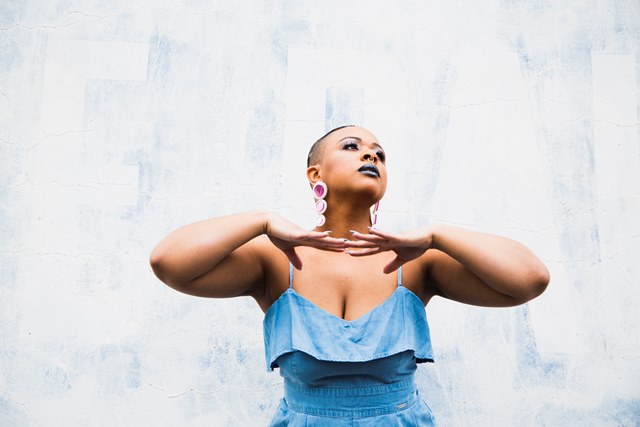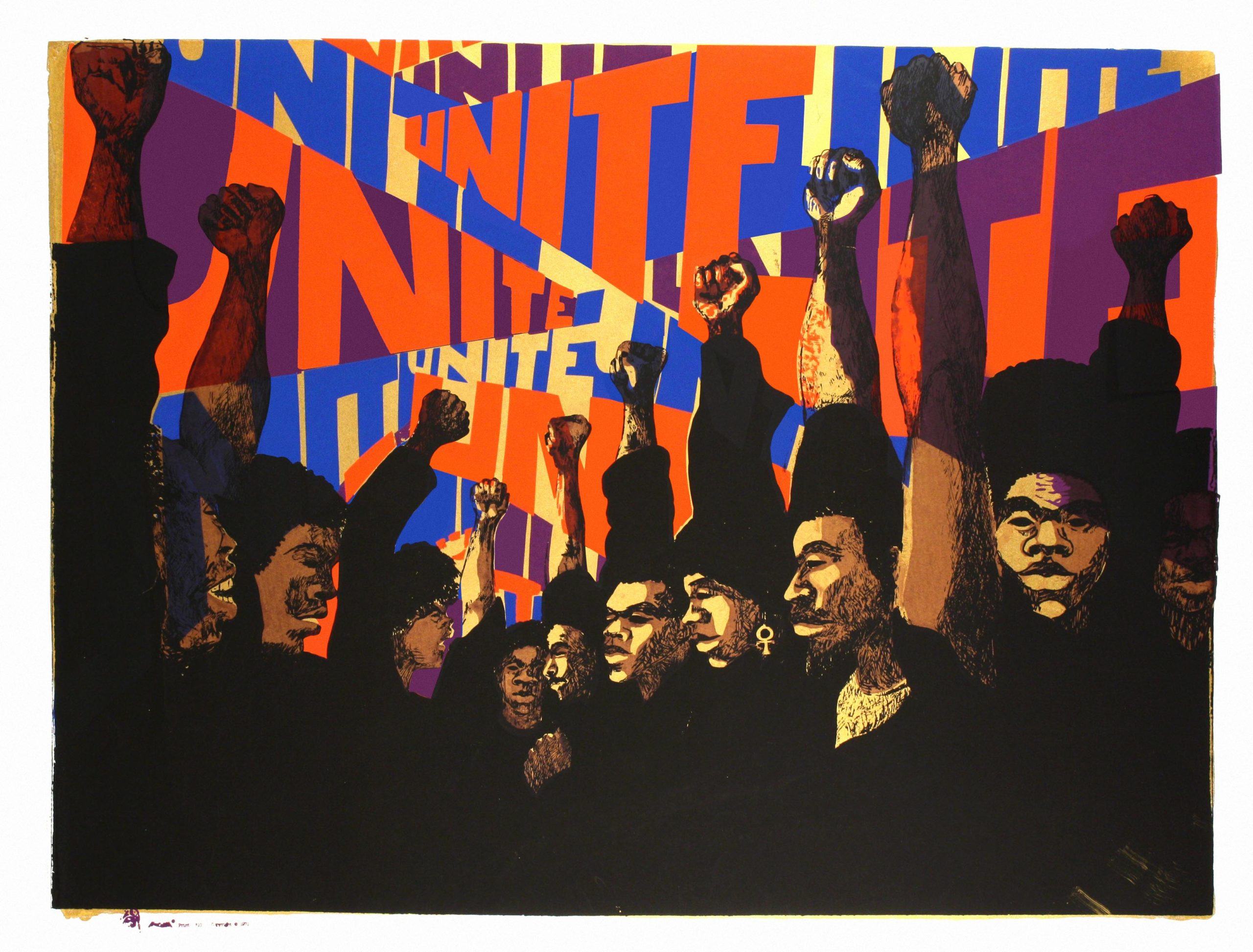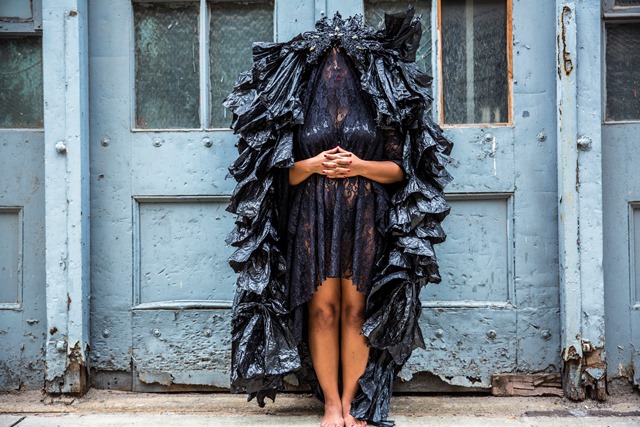
Through iterative and interdisciplinary practices, Taja Lindley creates socially engaged artwork that is able to reflect and transform its audience, shift culture and inspire people to act. Using movement, text, installation, ritual, burlesque, and multi-media, Taja creates immersive works that are concerned with freedom, healing, and pleasure. We had the pleasure of interviewing Taja to discuss her art, her hustle, and her ammo.
– Abby Conran
What is your AMMO?
My mom and my two aunts have been inspiring me lately. I’m currently developing a suite of burlesque performances dedicated to these three women who taught me the aesthetics of beauty and sensual self-expression in the ‘90s. These acts are an ode to their young Black womanhood that shape(d) my femme identity. I’m drawing on them and popular 90s R&B sensibilities for each of these burlesque acts.
What are your feelings as you begin your first and largest solo exhibition at the Carver Museum?
I am incredibly grateful for the opportunity! It feels particularly special to have my first solo show at a Black led and run institution. My artwork deals with spirit and memory, which means the content and materials of my installation need to be treated with respect and care. For example, I have a wall installation with the names of unarmed Black people killed by the police painted on black plastic bags. These names and the hundreds of other trash bags bags that coat the walls in the exhibition space are not just “bags on a wall.” They represent Black life and discarded histories. Because the content of my work is connected to the identity of the people who work there as well as the mission of the Museum, they honor my process and my artwork.
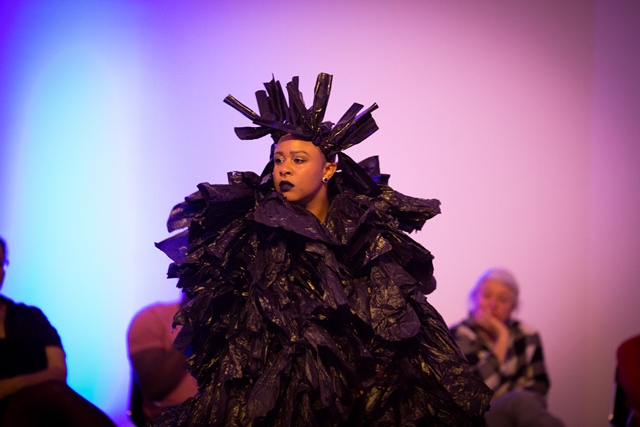
Tell me a little bit about your installation, “Re-Remembering is the Responsibility of the Living.” What are some of the pieces in it that mean the most to you?
“Re-Membering is the Responsibility of the Living” features the debut of new works and also contains some of my well known work, including This Ain’t A Eulogy: A Ritual for Re-Membering. There are four performance films in the installations: three of which can be viewed on televisions and another is projected onto a wall surrounded by white trash bags. There is a wall dedicated to unarmed Black people killed by the police. It is accompanied by 30-minute soundscape where I read aloud a list of their names, the city and state in which their life was taken, the year it occurred, and how young/old they were when they died. Lastly, in the center of the room is a red pedestal that displays four glass containers filled with soil from lynching sites in central Texas.
As I was preparing for my exhibition at Carver Museum, I was considering how to make the installation relevant to the the local community and local history. After some doing some research online I learned about the history of lynching in Texas and discovered that lynching sites were near and around Austin. I wanted to collect soil from approximate and specific lynching sites to draw connections between Austin and the rest of the United States, and to draw connections across time – between the history and current reality of anti-Black violence. The soil collection idea was inspired by the Equal Justice Initiative’s Community Remembrance Project where they collect soil from lynching sites nationwide. Using the Lynching in Texas site as a resource, I drove to several lynching sites in central Texas. It was, indeed, a ritual of re-membering. Especially since many of the sites I visited do not acknowledge the history of lynching on its land with markers or monuments.
I also considered my own rituals of re-membering as I prepared my work for the Carver Museum exhibition. There are many, but the one I chose to share in the installation are my journals. I’m currently in the practice of revisiting and reading my journals to re-member myself, and I share them in a performance film where I open them to a soundscape collage of me reading my journal entries.
How do you feel that art fits into political and cultural activism? Why is that important to you, specifically?
Art has always been an integral part of activism: everything from chants, songs and posters at our direct actions; to the ways in which we choreograph protests with gestures and movements; to the ways we lean into ancient healing arts to take care of ourselves and our communities. Art and culture have always been there, even as a strategy (see Black Panthers specifically and the Black Power Movement more generally).
It is that rich history that shapes my practices.
The professionalization of social movements in non-profits has moved us away from some of our cultural strategies, because, until relatively recently, art and culture were not considered fundable work activities and projects. Many of us are returning to our knowledge and understanding that creativity and imagination is what sparks and sustains our organizing efforts.
As an artist and activist, I understand that it will take creativity to address longstanding systemic oppression. My current body of work centers racial justice and reproductive justice. I am wielding my creative practice in the service of ensuring that Black people can live fully self-expressed lives with dignity.
What is your purpose in using recycled and discarded materials in your work?
I am drawing parallels between discarded materials and the violent treatment of Black people in the United States. Every black plastic bag represents a Black life. So when I create ornate environments, costumes and performances with them, it is an honoring of the dead – transforming what has been considered disposable into something sacred.
The bags also represent abandoned and forgotten histories. I believe objects carry memory, and as memory worker I insist that I recycle the materials I used in previous performances and installations. These bags carry metaphorical and literal memories from the performance rituals and exhibitions they were part of. It could be easier (and, quite frankly, cheaper) to purchase new bags rather than store and ship them. But to do that – to discard the bags I’ve used in the past because it’s inconvenient – would do a disservice to the meaning of my work.
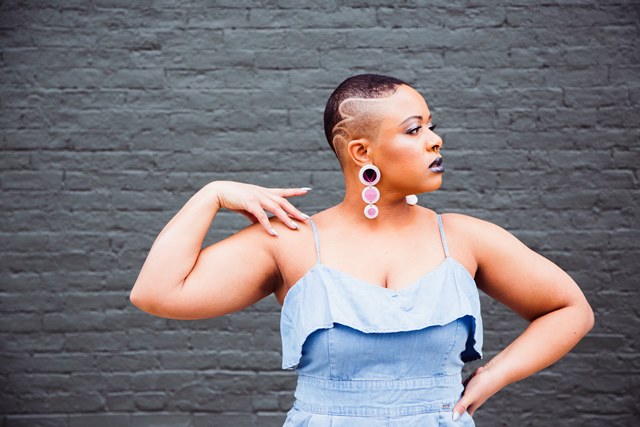
Tell me about Colored Girls Hustle. In art, as well as business, why is it important to create spaces for queer and people of color to support each other?
I came up with the name Colored Girls Hustle because it represents my hustle – I create and sell my creative works (i.e. earrings, t shirts, and more) which I make to inspire people to boldly live out loud. I created the Colored Girls Hustle Marketplace out of a desire to make Colored Girls Hustle a platform that supports other women-identified people of color who are hustling for their dreams. The CGH Marketplace is a pop up shopping experience featuring women of color artists, makers, and entrepreneurs. To date I’ve curated and created six markets that have generated sales for 35 women of color vendors. What I’ve learned through the CGH Marketplace is that we accomplish a lot when we pool our resources, creativity and networks. Cooperative economics is an ancient practice that our people (Black, Indiegenous, People of Color, Queer, women, femmes and more) have relied on to survive and thrive in systems that typically alienate and/or under-resource us. There is power when we convene, and I’m creating spaces through Colored Girls Hustle that allow us to tap into and wield that power.
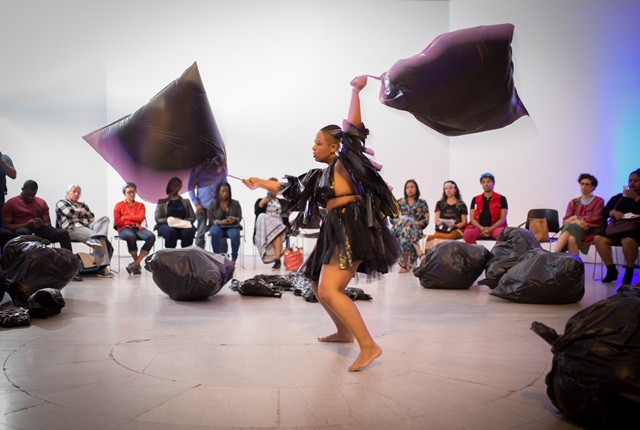
Ancestral and spiritual connection, as well as the positive forces of feminine energy, are prevalent themes in your installation and performative pieces. Where does that come from? Why do you feel it’s important to include that into your works?
My creativity is my church. It is my portal to spirit. It infuses all of my creations.
In my work, I’m a commitment to creating powerful, meaningful, and impactful experiences for the folks who witness and attend. I am only able to achieve that when I’m deeply grounded in my personal spiritual practices, and share some of them in/through my artwork.
What do you have planned next?
I will be performing The Bag Lady Manifesta in Austin, Texas April 19th and April 20th. I have two more solo exhibitions this year: Practice Gallery in Philadelphia, Pennsylvania, September 2019; and Art League Houston in Houston, Texas, November 2019 – January 2020.
Lastly, I’m looking forward to fulfilling my biggest residency to date. Earlier this month it was announced in The New York Times that I’ve been selected as one of four Public Artist in Residence (PAIR) in New York City. The NYC Department of Cultural Affairs embeds PAIRs in city government to propose and implement creative solutions to pressing civic challenges. Over the next 12 months I will be working closely with the NYC Health Department’s Center for Health Equity and the Tremont Neighborhood Health Action Center to co-create a socially engaged project to address how racism and gender oppression affect birth outcomes in the Bronx.
Find out more about Taja Lindley by visiting her at tajalindley.com



